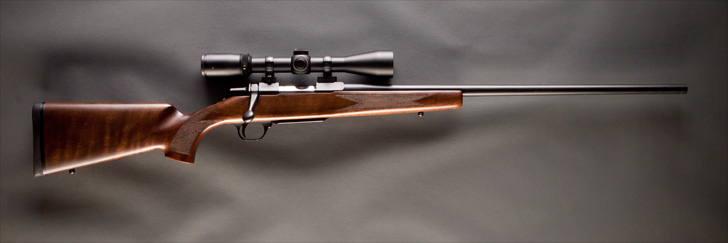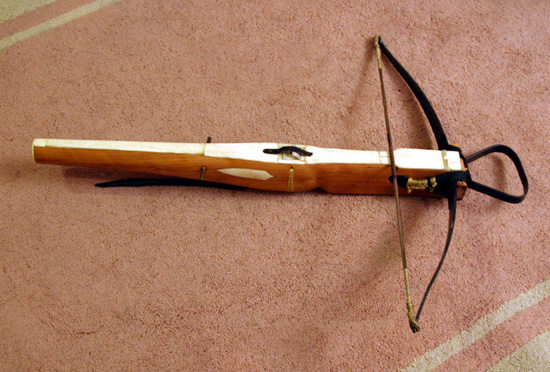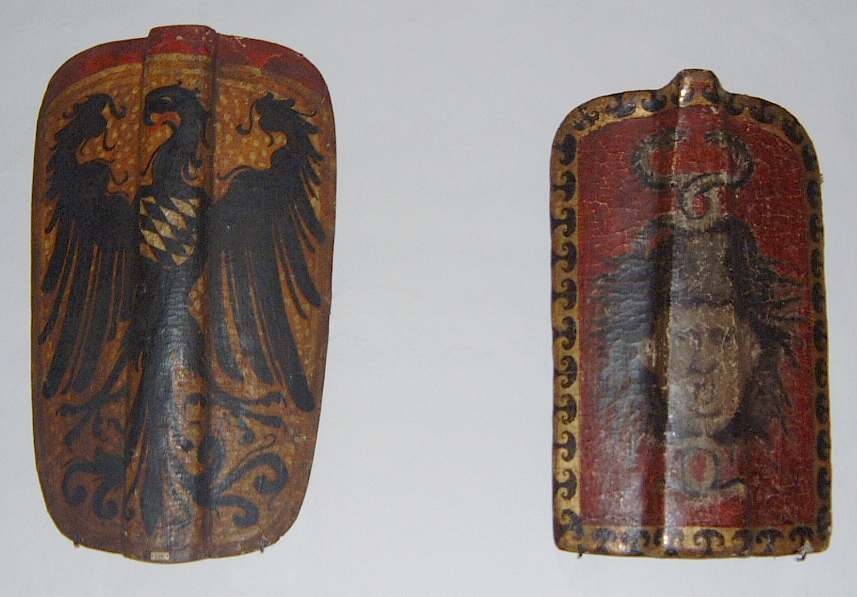-
2013-06-05, 12:10 AM (ISO 8601)
-
Top
-
End
-
#284
 Re: Got a Real World Weapons or Armour Question? Mk XII
Re: Got a Real World Weapons or Armour Question? Mk XII
A few quick thoughts about crossbows.
First for context
100 years from now, when everyone has lasers and particle beams, someone will ask, "Were rifles accurate? Did they cause damage? Did they have long range?"
And the person who knows the answer, if there is one, will first wonder. Do they mean this .22 Marlin bolt-action?

or this Ak-47

or this .358 big-game hunting rifle?

The range of crossbows are similarly diverse. They were in use for at least 2500 years .... long enough for a wide range of varieties. Some similar to the .22, were light and suitable mostly for target practice or very small game, like the skane lockbow.
Others were used for fast shooting, like the Chinese repeating crossbow.
By the high medieval period you have a range of military and hunting types. Many were used for both activities more or less interchangeably (like a musket during Colonial American times). The most specialized hunting weapons were the slurbows, like this one, which shot pellets:

the most specialized for warfare were the windlass crossbows and other similar types, which tended to be large and powerful. Mostly used for siege warfare. These were also called "English Winders"

While longbows were popular in Wales, England, Burgundy, Scotland and Scandinavia (more or less in that order), the crossbow gradually became the preferred military weapon in Central and Southern Europe.
Though the kind of standard crossbow, with a stirrup, often spanned by a belt-hook, a bit stronger than a typical bow but not much, (and slower to shoot, maybe 60% as fast) remained popular for both war and hunting. Like this replica.

The later medieval period saw the rise of very powerful composite prod weapons like this antique

These were made of composite materials (wood, horn, sinew and so on) and they were definitely susceptible to moisture. All bows were, especially their strings, but crossbows couldn't be unstrung easily. So they tended to be kept in covers, like the guy this one is carrying on his saddle:
For some reason I haven't been able to figure out yet they almost always kept bolts in very sturdy, solid wood quivers lined with fur, like this one

Not long after (early 1400's) you began to see steel prod crossbows which were also very strong.
Both the composite prod and the steel prod could be very strong, up to 1,200 lbs draw or more, and at least 10% (probably more like 30% or 40%) more powerful than any self-bow.
Accuracy
Crossbows were generally more accurate at shooting at individual targets than bows - a better 'sniper' weapon if you will. Bows with their high rate of shots could be a bit more 'spray and pray' at close range and something almost like light artillery or mortars at long range. English longbowmen even used to train for this with something called 'clout shooting'.
Though total range could be over 200 or 300 meters, period records from Germany and Poland mention a rough range to hit an individual person at around the equivalent of 50 meters for a bow and 80 meters for a 'standard' crossbow. There were also always stories about some guy who could shoot a birds leg off at 400 meters as well, but the sober military records (such as from the Teutonic Order) usually quote numbers like the above. Bows may have been more accurate for 'area-shots' which is how they were used a lot. To extend range, both crossbows and bows were used with 'fight arrows' (or flight 'bolts') which could shoot farther but did less damage (that might be the explanation for the 'rotten apples' anecdote shot by Dutch militia in that book about Philip the Good; I have a hard copy of that book and they also mention many other incidents in which crossbows used by the Flemish militias especially, were far more dangerous)
The really powerful crossbows were more accurate than the 'standard' type, but we don't really know how much due to the lack of really good quality replicas around today. The very powerful (800lb draw or more) steel prod crossbows are very hard (and extremely expensive) to make and pretty dangerous to use. The composite prod weapons are even more expensive and have only been made with very limited success (they start to fail after a few shots) they basically aren't within the grasp of the replica making industry yet. We also aren't sure which kind of bolts go with which kind of crossbows (some tests have shown that crossbow replicas of this level can shoot bolts up to 125 grams in weight at roughly the same speed as 40 grams)
Almost all period sources claim the late medieval crossbow was more accurate than both the bows (longbows and recurves) and the early firearms of the time (hand-gonnes and early arquebusses, mainly). By the time you get muskets and especially early rifled guns (which were not common until very late but which we know were around as early as the 15th century because they were being banned from shooting contests because they were considered cheating) at least with expert marksmen, the best guns were finally equaling and surpassing crossbows for accuracy by the mid-16th century, though a top-end military crossbow was still more accurate than the run-of-the-mill matchlock arquebus or caliver.
In addition to inherent accuracy for whatever reason, crossbows could also be held in readiness indefinitely like a gun (but unlike a bow), and unlike a bow, could be steadied against something like a wall, the nook of a tree, a window frame, the side of a wagon, etc. If you have any experience shooting rifles you know what an advantage that is for accuracy. This is probably why crossbows were so often used with wagons, or in sieges (from behind walls) or with special shields (pavises) which had a flat spot on the top just for resting the crossbow on.
Like these two

Unlike a gun (from that period) crossbows did not require the maintenance of a lit match, did not make a plume of smoke, and made only moderate noise compared to firearms (they were not as quiet as sometimes claimed though).
The Cliche's
Most of the clichés about crossbows comes from mixing up the different types. Something like a Skane lockbow is similar to a .22 that even a child could use pretty effectively. Modern documentaries typically refer to something like this in terms of ease of use. But we know from replicas and surviving antiques that the more powerful weapons, even the middling grade military ones, are not so easy or safe to use, and the top end ones are positively dangerous to the untrained. This is probably why surviving records show crossbowmen were paid quite well. The records may only show guys who were shooting the 'strong' crossbows.
Strong doesn't mean big though, a lot of the late medieval and Early Modern era crossbows of the most powerful types were rather small.
Crossbows in this range of power could reach quite far (a researcher named Payne Gallway famously shot an antique over 400 meters nearly a century ago) probably farther than any bow.
Crossbows could also definitely be used from horseback and were used this way extensively especially in the 15th century.
How to make them into 'superhero' weapons.
This is where my expertise dies off quickly, but probably the simplest thing to make an 'uber' crossbow was already covered in the original DnD; take a regular (upper end in terms of power) military crossbow and just make it instant spanning (cocking). This would be a very scary weapon equivalent to something like a powerful lever action rifle or something.
Crossbows were also used with special ammunition. Slurbows shot lead pellets as I already mentioned, these could at least theoretically be substituted for glass or ceramic globes containing pyrotechnic substances, acid, or drugs, or poison, or something more far out. Fire-bolts were also in common use, they undoubtedly wouldn't shoot as far but they are common enough in the archeological record that it's safe to assume they were effective.
G
Last edited by Galloglaich; 2013-06-05 at 12:35 AM.


 Re: Got a Real World Weapons or Armour Question? Mk XII
Re: Got a Real World Weapons or Armour Question? Mk XII










